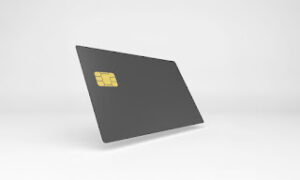Windows play a crucial role in shaping the comfort, appearance, and energy efficiency of any home. While glass often takes the spotlight in discussions about energy-saving designs, window frames are just as important. The materials used for window frames significantly impact heat retention, insulation, and the overall efficiency of your living space.
Choosing the right window frame materials can reduce energy costs, enhance your home’s aesthetic appeal, and contribute to environmental sustainability. In this article, we’ll explore different types of window frame materials and how they influence energy efficiency.
Why Window Frame Materials Matter
Window frames act as the structural backbone, supporting the glass and integrating the window into the building envelope. The choice of frame material determines not only how well a window performs but also its durability, maintenance needs, and visual compatibility with your home’s design.
Frames must balance insulation, durability, and aesthetic qualities. Here’s how they influence energy efficiency:
- Thermal Resistance: Frame materials differ in their ability to block heat transfer. Low thermal resistance leads to energy loss.
- Durability: Long-lasting materials reduce the need for replacements, making them more eco-friendly and cost-efficient.
- Compatibility with Glass: A high-quality frame complements energy-efficient glass technologies.
Types of Window Frame Materials and Their Energy Impacts
1. Vinyl Frames
Vinyl frames have become one of the most popular choices for modern homes due to their affordability, low maintenance, and energy efficiency. Made from polyvinyl chloride (PVC), these frames feature insulating air chambers that minimize heat transfer.
Key Benefits:
- Excellent thermal insulation due to their airtight construction.
- Resistant to moisture, warping, and corrosion, making them ideal for diverse climates.
- Affordable without compromising on energy performance.
Best Use Cases: Vinyl frames work well in both traditional and modern homes, offering great performance with minimal upkeep. Alside Windows, known for their high-quality vinyl designs, exemplify the potential of this material.
2. Wood Frames
Wood frames are a classic choice, prized for their natural beauty and excellent insulation properties. Wood has a low thermal conductivity, which helps maintain indoor temperatures year-round. However, wood requires regular maintenance to protect against warping, rot, and insect damage.
Key Benefits:
- Superior insulation, reducing energy loss during extreme weather conditions.
- Timeless aesthetic appeal, suitable for both rustic and elegant home designs.
3. Fiberglass Frames
Fiberglass frames are gaining popularity for their strength, durability, and exceptional energy performance. These frames expand and contract minimally with temperature changes, ensuring a consistent seal around the glass.
Key Benefits:
- High resistance to weather and temperature fluctuations.
- Superior energy efficiency, rivaling or exceeding wood frames.
- Low maintenance, with options for textured finishes that mimic natural wood.
Ideal Applications: Homes in regions with extreme temperatures or frequent storms benefit most from fiberglass frames. Milgard Windows, for instance, offers fiberglass options that balance energy efficiency and design versatility.
4. Aluminum Frames
Aluminum frames are strong, lightweight, and often used in modern or industrial-style homes. However, they are less energy-efficient due to their high thermal conductivity, meaning they allow heat to pass through more easily than other materials.
Key Benefits:
- High structural integrity, suitable for large windows or custom designs.
- Sleek, minimalist appearance ideal for contemporary architecture.
Challenges: To improve energy efficiency, aluminum frames often require thermal breaks or additional insulation. Despite these limitations, they remain a popular choice for commercial buildings or homes emphasizing aesthetics over insulation.
5. Composite Frames
Composite frames combine materials like wood and polymers to create a hybrid that blends the best of both worlds. They offer the insulation benefits of wood with the durability and low maintenance of synthetic materials.
Key Benefits:
- Excellent energy efficiency, often matching or surpassing traditional wood frames.
- Resistance to warping, rot, and pests, making them durable and eco-friendly.
Enhancing Energy Efficiency Through Professional Installation
No matter how energy-efficient the window frame material, proper installation is essential to maximize its benefits. Poorly installed windows can lead to air leaks, reduced insulation, and higher energy costs.
Partnering with experts like Kachina Windows & Doors ensures that every window is installed correctly, sealed tightly, and aligned for optimal performance. Professional installation guarantees that your investment in premium products like Milgard Windows or Alside Windows delivers the desired energy savings and comfort.
Choosing the Right Frame Material for Your Home
To determine the best window frame material for your home, consider the following factors:
1. Climate
Homes in colder regions benefit from materials with high insulation, like wood or fiberglass. In warmer climates, vinyl or composite frames may be more suitable due to their resistance to heat and humidity.
2. Budget
Vinyl and aluminum frames are budget-friendly without compromising performance, while wood and fiberglass are premium options with higher upfront costs but long-term benefits.
3. Style Preferences
Your home’s architectural design may influence your choice. For example, sleek aluminum frames complement modern styles, while wood frames suit traditional or rustic aesthetics.
4. Maintenance
If you prefer low-maintenance solutions, consider vinyl or fiberglass. Wood frames, while beautiful, require regular upkeep to maintain their appearance and functionality.
Maximizing Long-Term Benefits
Beyond selecting the right frame material, integrating energy-efficient glass technologies enhances overall performance. Look for features like:
- Low-E Coatings: Minimize heat transfer while maximizing natural light.
- Gas-Filled Panes: Argon or krypton gas improves insulation between panes.
- Multi-Pane Glass: Double or triple panes offer better thermal resistance and noise reduction.
Pairing advanced glass options with high-quality frames from trusted brands ensures your windows meet both aesthetic and functional needs.
Conclusion
Window frame materials are integral to a home’s energy efficiency and comfort. Whether you opt for the affordability of vinyl, the elegance of wood, or the durability of fiberglass, understanding the benefits and limitations of each material helps you make informed decisions.
Combining the right frame materials with professional installation by trusted companies like Kachina Windows and Doors ensures your windows provide lasting value.
Read More From Techbullion



































